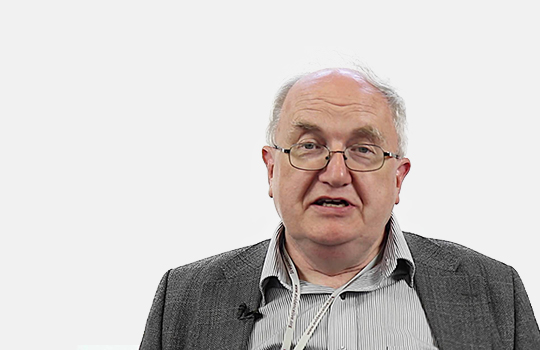Richard Lehman reviews the latest research in the top medical journals
 NEJM 5 Oct 2017 Vol 377
NEJM 5 Oct 2017 Vol 377
Obinutuzumab
Obinutuzumab may be a funny name, but anyone reading this paper will realize that follicular lymphoma is not a funny disease. Survival in this trial comparing obinutuzumab with rituximab was over 90% over a median of 3 years, but these years of augmented chemotherapy sound decidedly unpleasant. “Adverse events of grade 3 to 5 were more frequent in the obinutuzumab group than in the rituximab group (74.6% vs. 67.8%), as were serious adverse events (46.1% vs. 39.9).” I think this sentence is the one that patients need to know. The rest is an academic debate about the meaning of “progression-free survival,” which was slightly better with obinutuzumab. Yet if I got follicular lymphoma, I would only be interested in overall survival and quality of life—and for the latter rituximab is slightly superior. For a fuller discussion of the trial, I’m looking forward to Bishal Gayawali’s monthly oncology blog.
PROs for happiness
In reporting that article, I gave you my individual patient preferences. These are not quite the same as patient-reported outcomes (PROs in the USA, PROMs in the UK—the M standing for “measures”), the subject of a nice Perspective piece in this week’s NEJM. What a patient is asked to report may not be the same as what is most important to the patient. For example, the article states that “PRO collection has proliferated in oncology, where it has been linked to improved symptom management, enhanced quality of life, and longer survival.” That is not because of PRO collection in itself: it is because humane oncologists enter a dialogue with their patients in relation to their reported symptoms and the goals of treatment, and modify treatment accordingly. In a randomized trial, however, PROs can be collected by the armful but scientific rigour demands that the study protocol should be followed inflexibly. But I digress. This piece is about improving clinical practice and patient care generally. Read it thoughtfully and think about how you could make PROs a force for good in your own practice.
Zika vaccine
Does the world now have a vaccine against the Zika flavivirus? Sure, it has several candidates, and a new synthetic DNA vaccine that targets the ZIKV premembrane and envelope proteins is one of them. It’s just undergone a phase 1 trial of two dosages in 40 healthy volunteers, and produces the right sort of antibody levels in most of them. It saves the lives of Zika-infected mice. It may come in handy one day: or not.
JAMA 3 Oct 2017 Vol 318
Antithrombotics and haematuria
Good old Ontario: it’s managed to keep track of over 2.5 million people aged above 65 and enabled studies like this one which assesses the haematuria-related risks of antithrombotic agents taken by older people. On the plus side, anti-clotting drugs can reveal the presence of undiscovered bladder cancer by producing blood in the urine. But the minus side predominates: if you are taking an anticoagulant or antiplatelet agent, you are—not surprisingly—40% more likely to end up in an emergency department with gross haematuria, sometimes needing surgical intervention.
DOAC drug interactions
Double-blind randomised controlled trials are powered to detect important differences in benefits and harms between interventions. But this “power” falls short of answering many of the clinical questions which arise once the intervention is widely adopted. For example, we know that in people with atrial fibrillation, direct oral anticoagulants are often the first choice of treatment to prevent stroke. What we know much less about (compared with say, warfarin) is how they interact with many of the drugs which are commonly co-prescribed to people with AF. I’ve already praised Ontario: now it’s time to praise Taiwan, which set up its health system specifically with the capacity to link records with outcomes. In Taiwan, the drugs most commonly co-prescribed with DOACs in AF are atorvastatin (27.6%), diltiazem (22.7%), digoxin (22.5%), and amiodarone (21.1%). Of these, only amiodarone is associated with increased risk of bleeding: among other sporadically prescribed drugs, fluconazole, rifampicin and phenytoin come under heavy suspicion.
JAMA Intern Med Oct 2017
Less is More update
The 2017 Update on Medical Overuse is the fourth of its kind, where a large literature search is done to identify the ones—122 this year—which show the highest quality and have the greatest bearing on patient care and system costs. These are further reduced to the top ten.
These annual reviews are an invaluable resource for the Choosing Wisely and Overdiagnosis communities, though I’ve never heard them mentioned in the many meetings I’ve attended. Here are some examples:
— transoesophageal echocardiography for cryptogenic stroke
— oxygen for moderate COPD
— most carotid ultrasound
— active management of early localised prostate cancer
— surgery for meniscal tears.
Coronary CT v stress testing
Speaking of overdiagnosis, can anyone suggest how we could safely reduce the overinvestigation of non-cardiac chest pain in an era of risk aversion and disconnected care? Defeats me. The downstream consequences of any kind of investigation depend on the prior likelihood of what you find being treatable. Here’s a systematic review of stress testing versus coronary computed tomographic angiography for suspected coronary artery disease. And here’s the conclusion: Compared with functional stress testing, CCTA is associated with a reduced incidence of myocardial infarction but an increased incidence of invasive coronary angiography, revascularization, CAD diagnoses and new prescriptions for aspirin and statins. Despite these differences, CCTA is not associated with a reduction in mortality or hospitalizations.
Ann Intern Med 3 Oct 2017 Vol 167
Predicting death after acute heart failure
The label “heart failure” lives shamelessly on in medicine, despite being synonymous with death for most members of the public. In this Spanish hospital study of acute heart failure presentations, the average patient age was nearly 80 but the great majority lived on for more than 30 days.
These were typical real-life heart failure patients, and this study sought the best way to arrive at a 30-day prognosis. Most HF prognosis studies are middling-to-dreadful, but this one is truly exemplary both in its derivation methods and its practicality. Best of all, it resulted in a usable clinical tool, with and without BNP measurement.
The Lancet 7 Oct 2017 Vol 390
The false promise of regenerative medicine
Over nearly two decades now, I’ve followed the progress of “regenerative medicine”—mostly stem-cell research— through phase 1 studies, most of them featured in The Lancet. The yield has been spectacularly low. And now comes a Lancet commissioned article beginning: “In this commission, we argue that a combination of poor quality science, unclear funding models, unrealistic hopes, and unscrupulous private clinics threatens regenerative medicine’s social licence to operate.” To put it more bluntly, many people are beginning to think it is all rubbish, while others bankrupt themselves pursuing false hope. This article does not pull its punches: “… the number of poorly regulated clinics has grown; clinics that appeal to desperate patients and their families, who, in the absence of reliable clinical knowledge from trials, cannot be adequately informed to assess the risks and benefits…. The same environment is also permissive of one-off compassionate applications and poorly regulated trials.”
The article covers the full history of the subject and ends with robust recommendations for better science. Here for once is a great example of The Lancet living up to its long history as a radical and incisive presence in British medicine.
The BMJ 7 Oct 2017 Vol 359
Cancer drugs & the European Medicines Agency
Just ten years ago, to say outright that unbridled capitalism was destroying the ethics of medicine would be to call down accusations of left-wing ranting. Now it is a demonstrable fact. While The Lancet article shows how massive resources of scientific effort, money, and personal hope have been squandered on regenerative medicine, The BMJ looks at the exploitative mess that is most of modern cancer pharmacology. Nobody has written about better than Vinay Prasad, who contributes a measured editorial to accompany a research study of regulation of new cancer drugs by the European Medicines Agency and an in-depth investigation by Deb Cohen.
Plant of the Week: Rosa “White Wings”
We bought this plant because it looked nice in Kiftsgate garden. In our little garden, I thought it seemed a bit of a waste of space for its first two years, producing evanescent papery white single flowers from time to time, weakly scented and interesting mostly for their red anthers.
But as I look out in the second week of October in its third year, this plant is a real joy. It has reached about 1.5m and is crowned with lots of big white flowers which rejoice in the autumn sunshine. It’s like a lamp for the whole garden. And as for being a waste of space, it has an upright habit and actually takes up very little. It starts flowering in early June. Whatever the size of your garden, you would be right to get one.
